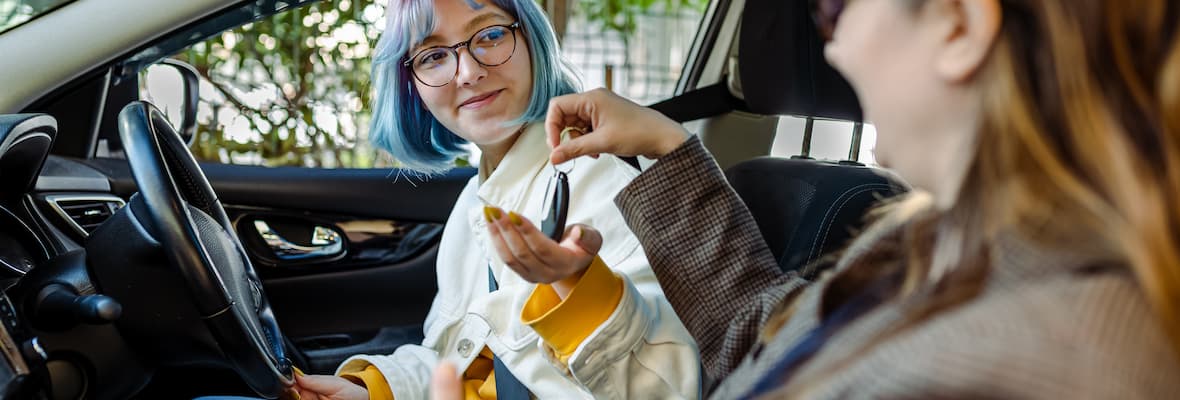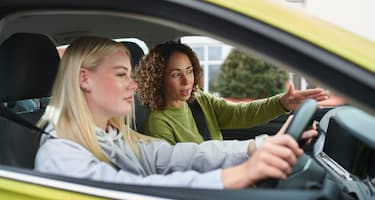Supervising a learner driver (especially if they are your child or a relative) can seem daunting.
But once you've refreshed your knowledge of the road rules, reviewed your driving habits and learnt how to communicate calmly and clearly while driving, you should feel confident in encouraging novice drivers to gain experience on their L-plates and learn how to drive safely.
Learner Drivers
In most states, learner drivers are required to complete 100+ hours of driving practice before they can take their practical driving test.
Learners can choose to drive with a professional instructor or someone they know (with a valid driver’s licence), but it’s recommended that they learn to drive with a combination of both.
Learner driver restrictions across Australia specify that during the learner period all drivers in the following states and territories must be supervised:
The Australian Capital Territory
Professional Driving Instructor
Professional driving instructors are fully licensed and qualified instructors who can teach your learner how to drive and help them develop the right driving habits.
Make sure your learner driver keeps track of all their completed hours in their log book. Depending on which state you live in, your learner can either record their hours in a paper log book or record them in a digital log book.
Keep in mind that when learner drivers have a 1-hour lesson with a driving instructor, this counts towards 3 hours in their logbook.
Driving Tips for Supervisors
When you’re supervising a younger driver this is a great opportunity to provide encouragement and reinforce responsible road-safety habits while they’re on their learner’s permit.
To supervise a learner driver you must:
Hold a full Australian driver’s licence (not a provisional licence), for the class of vehicle the learner will be driving in. For example, someone who can drive a ‘C class’ vehicle with an ‘A’ condition (automatic) on their licence can not supervise someone learning to drive in a manual car.
Not be under the influence of alcohol - Most states strongly recommend that your blood alcohol limit should be zero. It is also illegal to supervise learners under the influence of drugs.
Be seated immediately next to the person you’re supervising.
Use a registered and roadworthy vehicle that’s suitable for your learner driver.
Know how many passengers they can have when learning to drive.
Reviewing Your Driving Habits
Keep in mind that as the supervising driver, you must be prepared to take responsibility for all of your learner driver’s actions during each practice session and on busier roads.
Reviewing your own driving experience will help you become more aware of:
How a novice driver approaches road rules
How a learner receives instructions while driving
How to comply with traffic lights, signs, and road markings
How to look for hazards, check the mirrors and blind spots
How to drive according to the speed limit
How to be patient and understanding of other road users
Supervised Driving Experience
Before your learner can take their practical driving assessment, you must explain some road safety concepts that can negatively impact the way they drive.
These road safety concepts include:
Car accidents (anticipating hazards)
Fatigued driving (driving when they’re tired, emotional, stressed or upset)
Distracted driving (other passengers, loud music, using the GPS or a mobile phone while driving)
Drink driving (driving after they drink alcohol)
Following other vehicles too closely (tailgating)
When it comes to planning driving lessons as a supervisor, you should aim to have:
Short, frequent practice sessions (at first)
A key objective for each practice session
Practice sessions in a range of different conditions and settings (e.g daytime and nighttime)
And when you’re in the vehicle with the person you’re teaching, you should:
Avoid distracting your learner driver while they are practising.
Be positive, offering praise and constructive feedback when the learner completes a task.
Avoid being too critical - they are still learning.
Use commentary driving (describe what you’re doing aloud as you’re driving)
Remember, each learner driver will be different and may not be ready for their practical driving test, even after logging in 100 hours of supervised driving.
The 100-hour recommendation is simply the minimum number of hours suggested by most states and as a supervisor, you should be aware that sometimes learners will need more practice.
Safe Driving Habits for Supervisors
Once you know the rules for supervising a learner driver, you should also check whether your car is adequately insured.
With Budget Direct Car Insurance, you can add your learner driver to an existing policy (if it's your vehicle) or get a quote for a new Car Insurance policy if the learner driver wants to take out their own policy.






